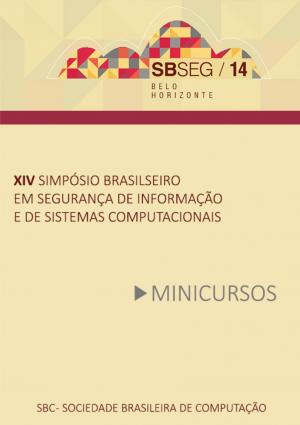Minicursos do XIV Simpósio Brasileiro de Segurança da Informação e de Sistemas Computacionais
Palavras-chave:
Segurança da Informação, Sistemas Computacionais, Minicursos SBSeg 2014, SBSeg 2014Sinopse
O Simpósio Brasileiro em Segurança da Informação e de Sistemas Computacionais (SBSeg) é um evento científico promovido anualmente pela Sociedade Brasileira de Computação (SBC). Nesta edição do SBSeg 2014, de um total de 10 submissões de propostas de minicursos foram selecionados quatro minicursos, representando assim uma taxa de aceitação de 40%.
Este livro reúne então 4 capítulos produzidos pelos autores das propostas de minicursos aceitas. O Capítulo 1 mostra o estado da arte em sistemas de armazenamento nas nuvens que sejam tolerantes a faltas e intrusões; O Capítulo 2, discute as técnicas de device fingerprint que são aquelas empregadas para identificar (ou re-identificar) um usuário ou um dispositivo através de um conjunto de atributos (tamanho da tela do dispositivo, versões de softwares instalados, entre muitos outros) e outras características observáveis durante processo de comunicação; O Capítulo 3 apresenta métodos e ferramentas de detecção de botnets; Por fim, o Capítulo 4 analisa os desafios de segurança e as principais contramedidas descritas em trabalhos acadêmicos sobre as inovações das redes veiculares.
Capítulos
-
1. Tolerância a Faltas e Intrusões para Sistemas de Armazenamento de Dados em Nuvens Computacionais
-
2. Device Fingerprinting: Conceitos e Técnicas, Exemplos e Contramedidas
-
3. Botnets: Características e Métodos de Detecção Através do Tráfego de Rede
-
4. Segurança em Redes Veiculares: Inovações e Direções Futuras
Downloads



